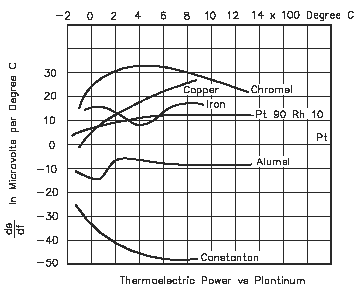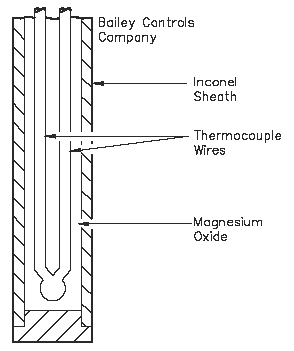Thermocouple Construction and Operation Review
Electronics, Instrumentation & Electrical
Thermocouple Construction and Operation Review
Thermocouple's are assembled with two dissimilar metal wires joined at one end. Thermocouples may be manufatured of several different combinations of materials. The performance of a thermocouple material is generally determined by using that material with platinum. The most important factor to be considered when selecting a pair of materials is the "thermoelectric difference" between the two materials. A significant difference between the two materials will result in better thermocouple performance. The illustration below shows the characteristics of the more commonly used materials when used with platinum.

Other materials may be used in addition to those shown in Figure 4. For example: Chromel- Constantan is excellent for temperatures up to 2000F; Nickel/Nickel-Molybdenum sometimes replaces Chromel-Alumel; and Tungsten-Rhenium is used for temperatures up to 5000F. Some combinations used for specialized applications are Chromel-White Gold, Molybdenum-Tungsten, Tungsten-Iridium, and Iridium/Iridium-Rhodium.
The illustration below shows the internal construction of a typical thermocouple. The leads of the thermocouple are encased in a rigid metal sheath. The measuring junction is normally formed at the bottom of the thermocouple housing. Magnesium oxide surrounds the thermocouple wires to prevent vibration that could damage the fine wires and to enhance heat transfer between the measuring junction and the medium surrounding the thermocouple.

Typical Thermocouple Construction